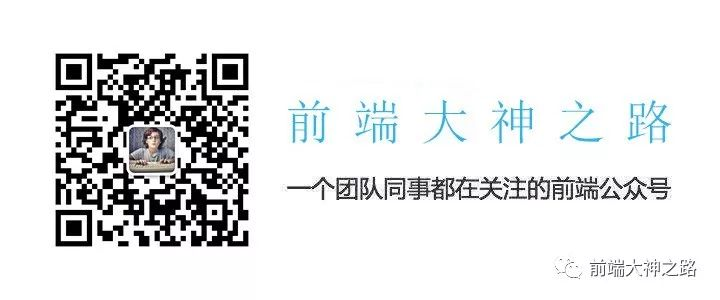前言
在移动端web开发中,UI设计稿中设置边框为1像素,前端在开发过程中如果出现border:1px,测试会发现在retina屏机型中,1px会比较粗,即是较经典的移动端1px像素问题。
我们要对与视口、物理像素、逻辑像素、设备像素比、css像素等移动端基本概念要有一定的了解。
产生原因
-
设备像素比:dpr=window.devicePixelRatio,也就是设备的物理像素与逻辑像素的比值。
-
在
retina屏的手机上,dpr为2或3,css里写的1px宽度映射到物理像素上就有2px或3px宽度。 -
例如:
iPhone6的dpr为2,物理像素是750(x轴),它的逻辑像素为375。也就是说,1个逻辑像素,在x轴和y轴方向,需要2个物理像素来显示,即:dpr=2时,表示1个CSS像素由4个物理像素点组成,如下图所示:
解决方案
1. 0.5px 方案
在IOS8+,苹果系列都已经支持0.5px了,可以借助媒体查询来处理。
/*这是css方式*/ .border { border: 1px solid #999 } @media screen and (-webkit-min-device-pixel-ratio: 2) { .border { border: 0.5px solid #999 } } /*ios dpr=2和dpr=3情况下border相差无几,下面代码可以省略*/ @media screen and (-webkit-min-device-pixel-ratio: 3) { .border { border: 0.333333px solid #999 } }
IOS7及以下和Android等其他系统里,0.5px将会被显示为0px。那么我们就需要想出办法解决,说实在一点就是找到Hack。
解决方案是通过JavaScript检测浏览器能否处理0.5px的边框,如果可以,给html标签元素添加个class。
if (window.devicePixelRatio && devicePixelRatio >= 2) { var testElem = document.createElement('div'); testElem.style.border = '.5px solid transparent'; document.body.appendChild(testElem); } if (testElem.offsetHeight == 1) { document.querySelector('html').classList.add('hairlines'); } document.body.removeChild(testElem); } // 脚本应该放在body内,如果在里面运行,需要包装 $(document).ready(function() {})
然后,极细的边框样式就容易了:
div { border: 1px solid #bbb; } .hairlines div { border-width: 0.5px; }
优点:简单,不需要过多代码。
缺点:无法兼容安卓设备、 iOS 7及以下设备。
2. 伪类+transform
原理:把原先元素的border去掉,然后利用:before或者:after重做border,并 transform的scale缩小一半,原先的元素相对定位,新做的border绝对定位。
/*手机端实现真正的一像素边框*/ .border-1px, .border-bottom-1px, .border-top-1px, .border-left-1px, .border-right-1px { position: relative; } /*线条颜色 黑色*/ .border-1px::after, .border-bottom-1px::after, .border-top-1px::after, .border-left-1px::after, .border-right-1px::after { background-color: #000; } /*底边边框一像素*/ .border-bottom-1px::after { content: ""; position: absolute; left: 0; bottom: 0; width: 100%; height: 1px; transform-origin: 0 0; } /*上边边框一像素*/ .border-top-1px::after { content: ""; position: absolute; left: 0; top: 0; width: 100%; height: 1px; transform-origin: 0 0; } /*左边边框一像素*/ .border-left-1px::after { content: ""; position: absolute; left: 0; top: 0; width: 1px; height: 100%; transform-origin: 0 0; } /*右边边框1像素*/ .border-right-1px::after { content: ""; box-sizing: border-box; position: absolute; right: 0; top: 0; width: 1px; height: 100%; transform-origin: 0 0; } /*边框一像素*/ .border-1px::after { content: ""; box-sizing: border-box; position: absolute; left: 0; top: 0; width: 100%; height: 100%; border: 1px solid gray; } /*设备像素比*/ /*显示屏最小dpr为2*/ @media (-webkit-min-device-pixel-ratio: 2) { .border-bottom-1px::after, .border-top-1px::after { transform: scaleY(0.5); } .border-left-1px::after, .border-right-1px::after { transform: scaleX(0.5); } .border-1px::after { width: 200%; height: 200%; transform: scale(0.5); transform-origin: 0 0; } } /*设备像素比*/ @media (-webkit-min-device-pixel-ratio: 3) { .border-bottom-1px::after, .border-top-1px::after { transform: scaleY(0.333); } .border-left-1px::after, .border-right-1px::after { transform: scaleX(0.333); } .border-1px::after { width: 300%; height: 300%; transform: scale(0.333); transform-origin: 0 0; } } /*需要注意<input type="button">是没有:before, :after伪元素的*/
优点:所有场景都能满足,支持圆角(伪类和本体类都需要加border-radius)。
缺点:代码量也很大,对于已经使用伪类的元素(例如clearfix),可能需要多层嵌套。
3. viewport + rem
同时通过设置对应viewport的rem基准值,这种方式就可以像以前一样轻松愉快的写1px了。
在devicePixelRatio=2 时,设置meta:
<meta name="viewport" content="width=device-width,initial-scale=0.5, maximum-scale=0.5, minimum-scale=0.5, user-scalable=no">
在devicePixelRatio=3 时,设置meta:
<meta name="viewport" content="width=device-width,initial-scale=0.3333333333333333, maximum-scale=0.3333333333333333, minimum-scale=0.3333333333333333, user-scalable=no">
实例验证:
<!DOCTYPE html> <html lang="en"> <head> <title>移动端1px问题</title> <meta http-equiv="Content-Type" content="text/html;charset=UTF-8" /> <meta name="viewport" id="WebViewport" content="width=device-width,initial-scale=1, maximum-scale=1, minimum-scale=1, user-scalable=no" /> <style> html { font-size: 11px; } body { padding: 1rem; } * { padding: 0; margin: 0; } .item { padding: 1rem; border-bottom: 1px solid gray; font-size: 1.2rem; } </style> <script> var viewport = document.querySelector("meta[name=viewport]"); var dpr = window.devicePixelRatio || 1; var scale = 1 / dpr; //下面是根据设备dpr设置viewport viewport.setAttribute( "content", + "width=device-width," + "initial-scale=" + scale + ", maximum-scale=" + scale + ", minimum-scale=" + scale + ", user-scalable=no" ); var docEl = document.documentElement; var fontsize = 10 * (docEl.clientWidth / 320) + "px"; docEl.style.fontSize = fontsize; </script> </head> <body> <div class="item">border-bottom: 1px solid gray;</div> <div class="item">border-bottom: 1px solid gray;</div> </body> </html>
优点:所有场景都能满足,一套代码,可以兼容基本所有布局。
缺点:老项目修改代价过大,只适用于新项目。
4. border-image
首先准备一张符合你要求的border-image
通常手机端的页面设计稿都是放大一倍的,如:为适应iphone retina,设计稿会设计成750*1334的分辨率,图片按照2倍大小切出来,在手机端看着就不会虚化,非常清晰。同样,在使用border-image时,将border设计为物理1px,如下:
样式设置:
.border-image-1px { border-width: 0 0 1px 0; border-image: url(linenew.png) 0 0 2 0 stretch; }
上文是把border设置在边框的底部,所以使用的图片是2px高,上部的1px颜色为透明,下部的1px使用视觉规定的border的颜色。如果边框底部和顶部同时需要border。
样式设置:
.border-image-1px { border-width: 1px 0; border-image: url(linenew.png) 2 0 stretch; }
到目前为止,我们已经能在iPhone上展现1px border的效果了。但是我们发现这样的方法在非视网膜屏上会出现border显示不出来的现象,于是使用Media Query做了一些兼容,样式设置如下:
.border-image-1px { border-bottom: 1px solid #666; } @media only screen and (-webkit-min-device-pixel-ratio: 2) { .border-image-1px { border-bottom: none; border-width: 0 0 1px 0; border-image: url(../img/linenew.png) 0 0 2 0 stretch; } }
优点:可以设置单条,多条边框,没有性能瓶颈的问题
缺点:修改颜色麻烦, 需要替换图片;圆角需要特殊处理,并且边缘会模糊
5. background-image
background-image跟border-image的方法一样,你要先准备一张符合你要求的图片。
此例是准备将border设置在底部 样式设置:
.background-image-1px { background: url(../img/line.png) repeat-x left bottom; background-size: 100% 1px; }
优点:可以设置单条,多条边框,没有性能瓶颈的问题。
缺点:修改颜色麻烦, 需要替换图片;圆角需要特殊处理,并且边缘会模糊。
6. postcss-write-svg
使用border-image每次都要去调整图片,总是需要成本的。基于上述的原因,我们可以借助于PostCSS的插件postcss-write-svg来帮助我们。如果你的项目中已经有使用PostCSS,那么只需要在项目中安装这个插件。然后在你的代码中使用:
@svg 1px-border { height: 2px; @rect { fill: var(--color, black); width: 100%; height: 50%; } } .example { border: 1px solid transparent; border-image: svg(1px-border param(--color #00b1ff)) 2 2 stretch; }
这样PostCSS会自动帮你把CSS编译出来:
.example { border: 1px solid transparent; border-image: url("data:image/svg+xml;charset=utf-8,%3Csvg xmlns='http://www.w3.org/2000/svg' height='2px'%3E%3Crect fill='%2300b1ff' width='100%25' height='50%25'/%3E%3C/svg%3E") 2 2 stretch; }
这个方案简单易用,是我所需要的。目前测试下来,基本能达到我所需要的需求,在最新的适配方案中,我也采用了这个插件来处理1px边框的问题。
总结
-
0.5px,相信浏览器肯定是会慢慢支持的,目前而言,如果能用的话,可以hack一下。 -
对于老项目,建议采用
transform+伪类。 -
新项目可以设置
viewport的scale值,这个方法兼容性好。 -
postcss-write-svg简单易用,仅适合直线,圆角建议用transform+伪类实现。
本文分享到这里,给朋友们推荐一个前端公众号
